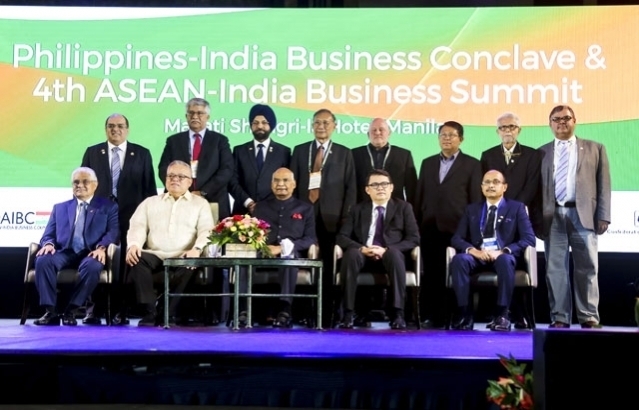When COVID spells out self-care
 THE LETTERS of the dreaded COVID-19 virus spell out fear, but a talk by pharmaceuticals company Sanofi tries to reverse this fear by using the letters to spell out a message for self-care.
THE LETTERS of the dreaded COVID-19 virus spell out fear, but a talk by pharmaceuticals company Sanofi tries to reverse this fear by using the letters to spell out a message for self-care.
Connecting with Loved Ones
Observation of mental and physical states
Vitamin Intake to ensure proper nutrition
Immunization to avoid other illnesses
Discerning attitudes towards challenges
Dr. Marthony Basco, Head of the Community Pediatrics Division of Medical City, a faculty member of the Ateneo School of Medicine and Public Health, and public health expert used those letters in a webinar held late last month that focused on the importance of self-care. He was joined by Vanee Gosiengfiao, General Manager of Sanofi Consumer Healthcare – Philippines and a certified Professional Coach by the International Coach Federation.
“When you say self-care, they think it’s selfish,” said Dr. Basco, discussing one myth about self-care. “What you’re always thinking of is yourself,” he said, but that is not true.
Another myth is that self-care is inherent to one’s character, the idea that it is natural for people to take care of themselves, but Dr. Basco clocks it up as a learned behavior. “We need to put a lot of attention when it comes to self-care: the way you carry yourself, the way you project yourself, not only in public, but in the mirror, when you look at yourself.”
Ms. Gosiengfiao highlighted a practical reason for self-care. “A lot of us really spend money — us personally, as well as governments — treating diseases, especially chronic diseases,” she said. “If you really study it, chronic diseases can actually be prevented. Even before they happen, and even before they put a lot of burden on governments and healthcare systems, why don’t we really proactively promote preventive health management?”
She added, “Let’s not spend later on, when the disease is there. We will spend much less if we try to prevent them in the first place. It means changing our lifestyles and perspectives; having a different mindset.”
The advice given above was related to the different experience of frontliners and those under community quarantine. For example, for the letter “C,” Dr. Basco urges those experiencing stress at work to discuss it. “The stress, the things you’ve seen and experienced during your tour of duty; you’ll need to talk to someone about it,” he said in a mixture of English and Filipino. “It’s good there’s social media; it’s good there are groups, because you can tell them things without much explaining. You can vent and they will understand you. That’s the purpose of small groups.” As for those stuck at home, Ms. Gosiengfiao advised, “What really helps is having a support system, especially during times of stress.”
The advice under “O” and “V” were practical things like observing events, and taking care of one’s body and mind, like getting enough sleep (Dr. Basco specifies that hours of sleep should be divisible by two). Eating healthy and taking vitamins, meanwhile (Sanofi is behind the Pharmaton multivitamins brand), will help prevent the development of the chronic diseases that Ms. Gosiengfiao warned about. Besides, Dr. Basco said, “What your mind imagines, it’s manifested in the body.”
For the advice for “I” (Immunization), Dr. Basco urged that more people get immunized: “There are a lot of vaccine-preventable illnesses that have been taken for granted since COVID-19 came into the spotlight.” While neither vaccine prevents COVID-19, the Department of Health has recommended that people get flu and pneumonia vaccines to prevent additional complications from the coronavirus disease 2019 (COVID-19).
The American Centers for Disease Control notes that while vaccines for the flu do not prevent COVID-19, “flu vaccination will be very important to reduce flu because it can help reduce the overall impact of respiratory illnesses on the population and thus lessen the resulting burden on the healthcare system during the COVID-19 pandemic.” It suggests that flu vaccines should be given to persons at increased risk for severe illness from COVID-19 including essential workers, people over the age of 65, and those with underlying medical conditions, and persons at increased risk of serious flu complications like infants and young children and pregnant women, among others.
As for the final letter, “D” (Discerning attitudes towards challenges), Dr. Basco said, “The things you can’t control you’ll have to discern them, and then leave them alone.” For example, he spoke about the community quarantine that has kept most of us at home. He urges people to rediscover their home: pictures that may not have been admired, books that haven’t been read, repairs that haven’t been finished. “You can be creative,” he said.
“Physical constraints should not limit our mental capacity,” he said. “Confinement in our own homes is a physical restriction, but our minds and hearts can go outside.”
“Take a look at it positively,” says Ms. Gosiengfiao. “This is the only time that I’ve had so much time with family and friends, and for myself.”
Speaking of the outside, both spoke about the time in the future when we can freely go out of our houses again. “It will still take time for the vaccines and medicines to be available,” Ms. Gosiengfiao said. “I’m sure the scientists, Sanofi’s included, are working double-time to make sure that the vaccines are available pretty quickly. The reality is, it will still take time. In the meantime, we need to still observe proper hygiene, proper protection, and, if we can, stay at home.”
The whole world is waiting for a vaccine, one of the things that might finally end the pandemic. Dr. Basco says that the end of the pandemic can only come this way: “When we accept that COVID-19 is already a reality, then it has ended. Now, it is part of our lives: just like flu, measles, chickenpox, diarrhea, the common cold. COVID is here to stay.
“That is the end of it; once we accept it.” — Joseph L. Garcia




